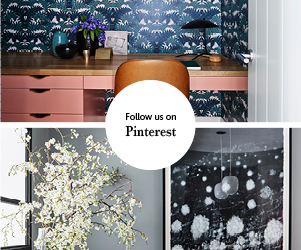Point Yamu by Como














Located at the tip of Cape Yamu, Phuket, and overlooking the utterly picturesque Andaman Sea is Point Yamu by Como, a luxury hotel with adjoining Shambhala wellness centre. What’s special about this accommodation – with its 79 rooms and 27 private villas – is its approach to luxury. Both in terms of hospitality and design, COMO is low-key – intimate and down-to-earth and focusing on Thai tradition to create a space of fresh indulgence. While also feeling positively contemporary, the hotel honours the simple pleasures. As designer Paola Navone puts it, the hotel is ‘simple with a touch of irony and not aggressive.’
Tasked with designing a space that could contain the very special COMO attitude to hospitality and wellness, Pavone has incorporated the immediate environment of Phang Nga Bay – a UNESCO World Heritage Site, into the design. Drawing on what surrounds the spot – which as Navone points out would ‘be hard not to be inspired by’, with views from every direction – the Italian designer has called on ‘her colour’. Sweeping shades of blue and turquoise dominate the colour palette, spilling into the surrounding sea and sky and blurring the line between interior and exterior. Open spaces throughout the hotel let the landscape in, and natural materials and organic shapes mimic the landscape and call up a history of handcraft. The exterior of the hotel for example is wrapped in a mesh screen, turning what is a ‘massive structure’ into something ‘softer, less opposite to nature and connecting the architecture to the landscape in an unexpected way’. Likewise, the dotted villas lay close to the sea, from a distance seeming to ‘float on water’, and sunlight is drawn into the main structure to create natural partitions where, ordinarily, walls would sit – exemplifying the non-aggressive approach Navone speaks of.
As for tradition, Navone was always keen to ‘take advantage of Thai craft savoir-faire as much as possible’. Ceramic, one of the most important craft in Thailand, is dotted throughout the hotel, in the bedrooms, the spa walls and the bathrooms. Custom-designed special ceramic blocks create transparent partitions; while ceramic is also found as legs and supports for furniture; and for some of the graphic elements, such as the room numbers. Solid timber, too, from northern Thailand, was used to produce all of the room furniture while traditional basket weaving traditions – so central to the country, are drawn into numerous parts of the hotel. ‘We used giant weaving to design the corridors, as well as the white giant lamps that hang in the lobby,’ says Navone.
Of course the challenge was to not only pay tribute to the past but to design a space that was new, a place where guests would breathe much of Thai traditions but in a contemporary setting. As well as crisp neutrals and open spaces, which will always make a space feel current, the design is contemporary in that it is unique – peppered gently with ‘new ways of presenting everyday items’ and mixing different centuries and continents together. In the Italian restaurant and breakfast area is a wall full of crisp white dishes that hang like little paintings, while large scale tubular lamps hang floating in the breeze from the ceiling – mimicking nature at the same time as acting as a quite brilliant piece of contemporary art. In the Thai restaurant, wood is used in a way that makes ‘scales’ for a wall.
At Point Yamu, nature, tradition and individuality are beautifully embraced. The result is a space that is traditional but new, comfortable and serene, humble yet completely luxurious. Rather than extravagance, Point Yamu makes the most of the surrounding riches – creating the kind of bliss we feel at home in.
Credits: Photography by Ben Pyke

